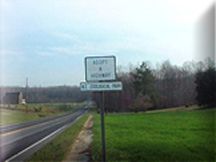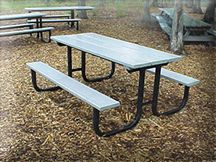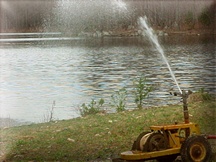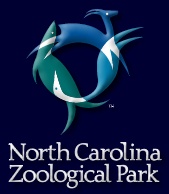|
NC
Zoological Park

 |
CONSERVATION CAPTAINS
A group of Zoo Employees meet monthly
to find ways to reduce, reuse and recycle waste materials. They also
sponsor Employee Awareness Meetings, Earth Day, Use Less Stuff Sale,
and Adopt-A-Highway events.
|

|
COMPOSTING
The Zoo’s new Compost Center is surfaced
with recycled coal fly ash and processed 1568 tons of manure, bedding,
plant material, kitchen scraps and corrugated cardboard in 1999. All
compost is used at the Zoo. A demonstration site in the Touch and Learn
Center educates visitors on backyard composting.
|

|
ENERGY
Since 1998, the Zoo has used
a computerized energy manage-ment system to control and monitor temperature
and humidity in each building and exhibit. In the Education Center
alone, the system has reduced electricity use by 40%. Rangers and
other staff use bicycles for travel in the Park.
|

|
SOLID WASTE
The Zoo reduces office supplies
by using e-mail and bulletin board, expanding margins, double-sided
copying and reusing file folders, envelopes, and scrape paper. Instead
of copying and mailing invoices and purchase order requests, the Zoo
keys them direct. Many warehouse supplies such as cleaners, paper
goods, electrolyte drinks and drugs are purchased in bulk.
|

|
RECYCLING
The Zoo collects office paper,
corrugated cardboard, used motor oil, oil filters, tires, batteries,
antifreeze, pallets, cooking grease, wood waste, and plastic six pack
rings for recycling. The Zoo manages a Randolph County Recycling Drop
Site on Zoo property and accepts mixed paper, newspaper, metal cans,
glass containers, and plastic bottles.
|

|
BUY RECYCLED
The Zoo’s picnic tables and
recycling containers are made from recycled plastic wood as is the decking
in the Aviary renovation project.
|

|
WATER REDUCTION
The Zoo uses 62 million gallons
of water in exhibit tanks, irrigation, and cleaning animal areas.
Water meters were installed in 1996 to monitor water use and detect
leaks. Upgrades to aquatic filtration systems have resulted in less
frequent turnover of backwash and fewer tank drain-and-fills. Water
for irrigation comes mainly from two on-site lakes. High pressure/low
volume nozzles are used to clean animal areas.
|
Everyday is Earth Day at the North Carolina Zoo!
|









